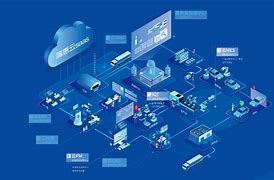1.EarlyDays:UsabilityFocus

Evolution of Digital Product Experience Design Processes
Designing digital products has evolved significantly over the years, influenced by technological advancements, user expectations, and iterative design methodologies. Let's explore the journey of digital product experience design through key stages:
In the early days, digital product design primarily focused on usability. Designers aimed to create interfaces that were functional and intuitive, often drawing from principles of graphic design and humancomputer interaction (HCI). The emphasis was on making technology accessible and easy to use for early adopters.
As digital products became more widespread, the focus shifted to UserCentered Design (UCD). This approach emphasized understanding user needs through research and incorporating user feedback throughout the design process. Iterative cycles of design, prototyping, and testing became common, aiming to optimize user experience based on realworld usage scenarios.
With the advent of Agile methodologies, digital product design processes became more iterative and collaborative. Crossfunctional teams including designers, developers, and product managers worked together in sprints to quickly build, test, and refine product features. This iterative approach allowed for faster innovation and better alignment with evolving market demands.
Design Thinking emerged as a prominent framework, encouraging designers to empathize with users, define problem spaces, ideate creative solutions, prototype rapidly, and test assumptions. This humancentered approach emphasized the importance of understanding the emotional and practical needs of users, driving innovation that truly resonated with target audiences.
As digital products evolved, the distinction between User Experience (UX) and User Interface (UI) design became more pronounced. UX design focused on overall user journey and satisfaction, while UI design concentrated on visual aesthetics and interactive elements. Both disciplines collaborated closely to create cohesive digital experiences that combined usability with visual appeal.
Advancements in data analytics enabled designers to leverage user data for informed decisionmaking. Datadriven design processes involved analyzing user behavior, preferences, and pain points to optimize product features and personalized experiences. This approach aimed to anticipate user needs and deliver tailored solutions that increased engagement and satisfaction.
With the rise of voice assistants, augmented reality (AR), and Internet of Things (IoT) devices, digital product design expanded beyond traditional screens. Designers began creating multimodal experiences that seamlessly integrated voice commands, gestures, and physical interactions with digital interfaces. This shift required new design principles and considerations to ensure usability across diverse interaction modes.
Looking ahead, artificial intelligence (AI) is poised to transform digital product experiences further. AIpowered systems can analyze vast amounts of data in realtime, predict user behavior, and automate personalized interactions. However, ethical considerations such as privacy, bias, and transparency will play a crucial role in shaping future design practices.
In conclusion, the evolution of digital product experience design reflects a journey from usabilitydriven interfaces to humancentered, datainformed, and multimodal experiences. By embracing new technologies and methodologies, designers continue to innovate and create impactful digital products that enhance user lives.
